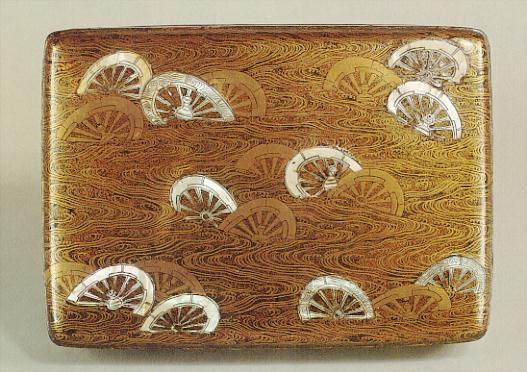| architecture |
| calligraphy |
| ceramics |
| clothing |
| comics |
| gardens |
| lacquerwork |
| literature |
| movies |
| music |
| painting |
| poetry |
| sculpture |
| tea ceremony |
| television |
| theatre |
| weaponry |
| thematic routes |
| timeline |
| the site |
context: lacquerwork
History of lacquer
It's not clear when lacquer was first imported from China, but there was some use on late Jomon pottery; and most notably, an Imperial Lacquer Department was established in the 4th Century B.C.. The use of powdered gold in lacquer is mentioned in the 4th Century A.D., but it was the coming of Buddhism in the late 6th Century, with its great appetite for icons, that heralded the great increase of lacquer's popularity through the Heian era - which is also when most major technical developments were made.

|
a very famous 12th Century cosmetics box |
From then on, most of the major families and lacquer workshops were supported by the court, shogun and daimyos - with the long work time and the difficulty of obtaining gold dust, this was a necessity. Much later, in the Edo period, the increasingly wealthy merchant class also became major patrons.
The end of isolationist, feudal Japan in the late 19th Century also saw the end of most lacquerwork. The daimyos disappeared; the sumptuary laws which focused merchants' spending on such small lacquered objects as inro were abolished; western clothes meant pockets and not objects hanging from the sash; the western disdain for craft as less than art was absorbed; modern manufacturing techniques shoved some lacquered objects aside; a cult of the artist could never be applied to crafts that were team efforts; and so on. There are lacquer artists nowadays, but the old ways are dead and gone.
backwards: technical
forwards: objects
